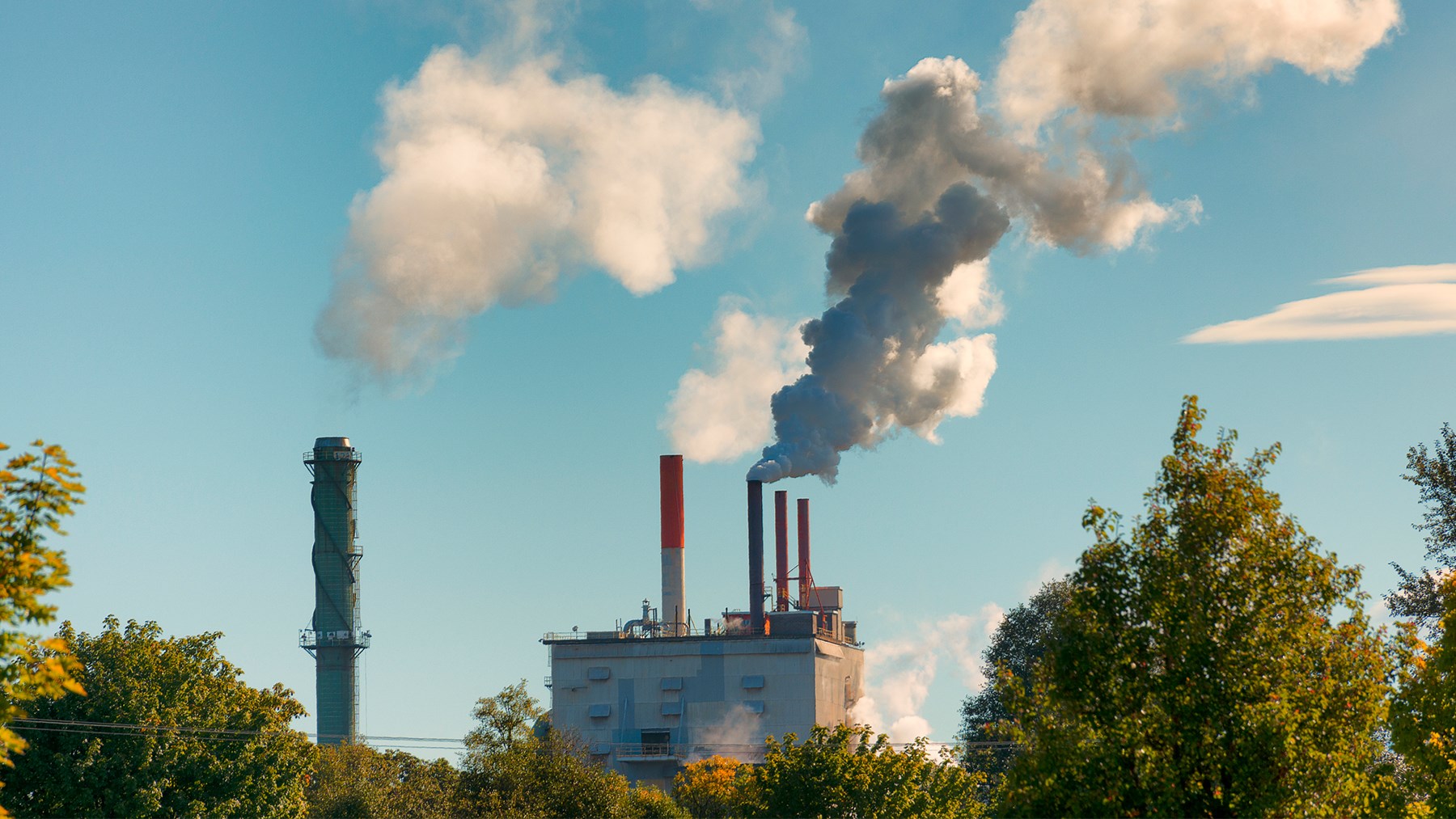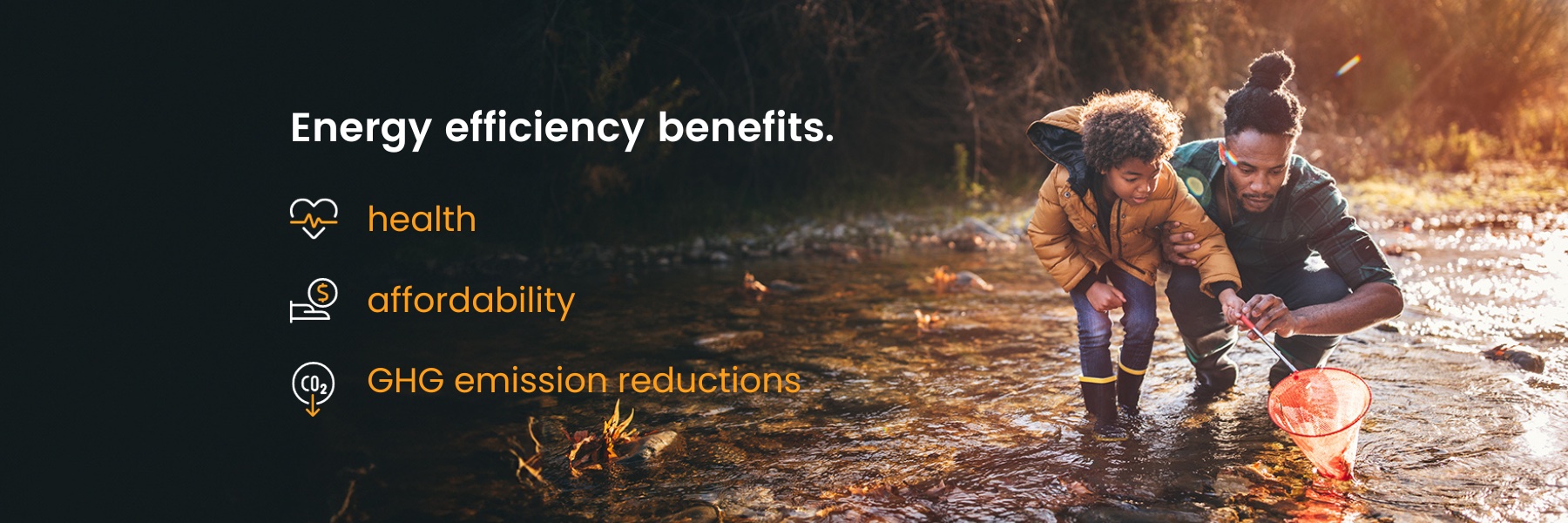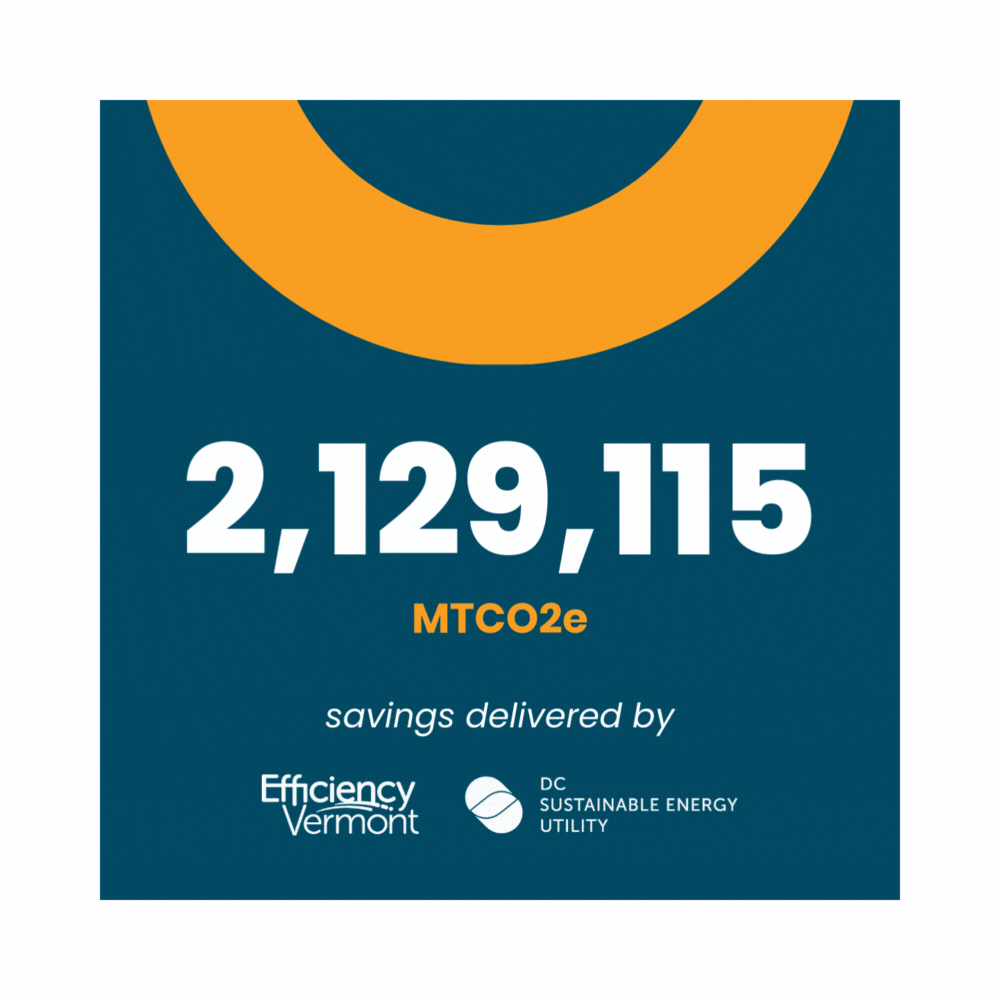How can energy efficiency programs evolve to reduce GHG emissions?

The Challenge
As states set ambitious climate policies and clean energy goals and electricity grids are increasingly powered by renewable energy, many energy efficiency programs are looking for ways to expand the value they provide to customers and support these new priorities.
The Solution
Energy efficiency programs can align with climate change mitigation and clean energy goals by adopting performance metrics for greenhouse gas (GHG) emissions reduction. By implementing rigorous protocols to measure and verify GHG reductions and working closely with regulators and stakeholders, VEIC evolved the portfolios of two energy efficiency programs to include performance targets for GHG reduction. Services: Transportation Electrification , Energy Efficiency , Building Decarbonization
The Impact
Performance metrics for Efficiency Vermont’s 2021-2023 triennial period and for the District of Columbia Sustainable Energy Utility’s (DCSEU’s) 2022-2026 contract include GHG emissions reductions, making them among the first energy efficiency portfolios in the nation to adopt GHG performance metrics.
Energy Efficiency – A US Success Story
Since the oil crisis of the late 1970s, energy efficiency policies have catalyzed the clean energy transition and delivered big results for consumers by incentivizing energy savings and reducing energy costs. Measures such as efficient lighting, heating, and cooling system upgrades, weatherization, and industrial process improvements have dramatically reduced our national demand for energy—even as the economy has grown. Without the efficiency investments made since 1990, we would need 313 additional large power plants to meet our current energy requirements.
Energy efficiency programs also deliver many other benefits, like health, affordability, and GHG emission reductions. Traditionally, these GHG reductions have been understood as a beneficial side effect, but not a primary programmatic goal.
Leading efficiency programs are changing this paradigm.

Aligning Efficiency Programs with Climate Goals
States and cities with aggressive energy efficiency goals are beginning to reexamine how energy efficiency programs can best contribute to meeting those goals. One way to align energy efficiency programs with these emerging policy priorities is to set performance targets for GHG reduction, in addition to or in lieu of fuel-specific energy savings metrics. Even when energy savings and GHG reductions are broadly correlated, the choice of metrics can affect a host of design choices from the measure level to the portfolio level.
Implemented by VEIC, both Efficiency Vermont and the DCSEU are in jurisdictions with strong decarbonization policies. As a result of foresight, planning, and strong ties to the community, both adopted GHG reduction targets for their current performance cycles—two of the first efficiency programs in the nation to do so.
“We’re very proud of our work with policymakers to establish GHG performance metrics in Vermont and DC. With the right policies in place, we can decarbonize buildings and transportation with technology that exists today.”
Proving the Value of Research and Demonstration (R&D)
Both Efficiency Vermont and the DCSEU already tracked and reported on the GHG impacts of programs, but to optimize program design for GHG reductions, they needed to deepen their understanding. VEIC supported feasibility studies and pilot testing in both jurisdictions to expand the organization’s expertise and develop accurate and standardized protocols for GHG measurement.
Beginning in late 2018, Efficiency Vermont introduced GHG impacts as a screening criterion for its R&D program. Recent R&D projects have explored the GHG impacts of refrigerants, weatherization and construction materials, and Commercial & Industrial (C&I) heat pump applications. In 2019, the DCSEU embarked on a Low-Income Decarbonization Pilot to explore beneficial electrification program strategies. Not only did this pilot assess costs, GHG reductions, lifecycle savings, and consumer benefits, it also identified potential obstacles to electrification retrofits in single-family homes occupied by low-income households.
Shared across VEIC, these projects and pilots helped center GHG reductions as a key program goal, provided staff and regulators with insight into designing effective energy solution programs to optimize GHG reductions, and established the requisite technical skills and internal processes to implement a GHG metric.

Adopting GHG Performance Metrics
Informed by research and pilots, VEIC worked with policymakers and stakeholders in Vermont and DC to incorporate GHG reduction targets into the performance frameworks for Efficiency Vermont and the DCSEU. As part of its 2021-2023 Demand Resources Plan proceeding, Efficiency Vermont proposed, and Vermont regulators approved, new GHG reduction performance goals for Efficiency Vermont’s electric and thermal efficiency portfolios: metric tons of CO2e reduction from both energy and non-energy sources.
Similarly, the DCSEU worked with its Advisory Board and the District Department of Energy & Environment (DOEE) to design GHG performance benchmarks that strengthen its contribution to District decarbonization goals. As a result of these efforts, the DCSEU’s 2022-2026 contract includes new GHG-based performance targets: CO2e reductions and fuel-neutral energy savings, measured in MMBtus.

Since adopting these new performance metrics, Efficiency Vermont and the DCSEU have delivered 2,129,115 MTCO2e in lifetime greenhouse gas emissions—the equivalent of not burning more than 2 trillion pounds of coal.
The Next Chapter in Energy Efficiency
When the need to reduce GHG emissions became clear to policymakers in both Vermont and DC, Efficiency Vermont and the DCSEU were natural partners. A history of proven results, technical know-how, and deep integration in their communities positioned these efficiency programs as key collaborators in the effort to achieve climate and clean energy goals.
As more program administrators seek to align efficiency portfolios with state climate and clean energy policies, they can learn from VEIC’s experience. While the lessons from Efficiency Vermont and the DCSEU will be particularly relevant to program administrators in jurisdictions with ambitious climate goals, all program administrators can begin tracking the GHG impacts of efficiency programs, update tools and methods, and build expertise through research and demonstration projects.
Who We Are and How We Help
VEIC provides services under a broad clean energy umbrella that includes energy efficiency, building decarbonization, transportation electrification, and clean and flexible grid solutions. We work with utilities, state energy offices, transit agencies, non-profits, businesses, and more to advance electrification and decarbonization efforts across the country. From decarbonization program planning and implementation to federal funding services, we help clients achieve their goals and make an impact.
Reach out today so the VEIC team can learn more about your building electrification and energy efficiency ideas.